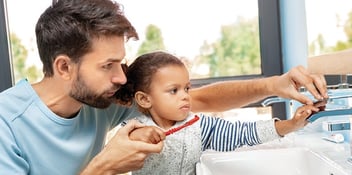Do Australians pay enough attention to their water consumption?
A new report from Smart Approved WaterMark (SAWM) found most Australians are on ‘autopilot’ when it comes to water use in their everyday lives.
Australia’s Relationship with Water, released late last year, offers insights into how people value water, and drivers that might lead people to improve their water literacy and conserve this precious resource.
According to the report, there is a disconnect between the value people put on water in the environment versus the water they rely on for everyday use.
The results show 91% of people believe water is a precious resource, but further questioning revealed that people perceive ‘water’ and ‘tap water’ as two different things – only 42% of respondents said tap water is a precious resource.
“Until they were asked to think about it, survey respondents found it difficult to value tap water,” the report states.
Out of mind
SAWM found part of the reason for this disconnect is that many behaviours around household water use are “subconscious”. Most people reach for the tap at least 16 times a day, according to the research, but give little thought to the process behind it. This extends beyond usage to features such as the water-saving capabilities of household appliances like washing machines.
Low water literacy amongst the general public could play a role, with 45% of respondents saying they don’t give any thought to where their water comes from.
“It’s much like loving milk but not knowing what a cow is,” the report’s authors state.
While only some survey respondents spent time thinking about where their tap water comes from, most said they would definitely worry if one day nothing came out of their taps. The research also found significant differences in how generations viewed the value of tap water.
Older generations seem to have the highest rates of water literacy, with respondents in the higher age brackets showing more willingness to conserve water and use water-efficient devices.
This correlates with data from the survey showing older generations were more likely than younger generations to have lived through a drought and been affected by shortages: 53% of Baby Boomers (those 55-80 years old) said they have been affected by shortages at some point, while only 35% of Generation Y (23-38) and 24% of Generation Z (14-22) could recall being affected by a shortage.
Being personally affected by a water shortage helps people make connections between what comes out of their tap and water resources in the natural environment, the report concluded.
“This knowledge could increase the value of water in the eyes of the users, starting a conscious relationship with water that could drive behaviour change towards more efficient domestic water use,” the report states.
Rising to the challenge
In response to this information, SAWN announced it would launch the One Bucket Challenge to help people re-evaluate their relationship with water and place more value on what comes from their taps.
“Much the same as air, water is taken for granted and not consciously used or valued,” said SAWM CEO Chris Philpot.
“We hypothesised that by making water ‘visible’, Australians would relate to it, value it and want to use it efficiently. Furthermore, achieving this would pave the way for the water efficiency campaigns and initiatives to be significantly more successful.”
The One Bucket Challenge encourages households to manage with just one bucket of water for one day. Early trials, conducted as part of the research and interviews for Australia’s Relationship with Water report, showed a positive response to the experience, with participants saying they were more willing to save water and use it more wisely as a result of the exercise.
“The research concluded that the key to building a relationship between everyday Australians and water lies in improving people’s understanding of the household water cycle and use of an experience that will inspire conscious use – would make them value water,” Philpot said.
He added that SAWM is currently sharing the results of this research with councils and water utilities. It also plans to launch the One Bucket Challenge nationwide this year.
The survey results are based on eight ethnographic studies and more than 2000 survey responses from people around Australia. Questions covered topics such as demographic differences in water-related behaviours, whether people know where their water comes from and how much they think about their water use.

